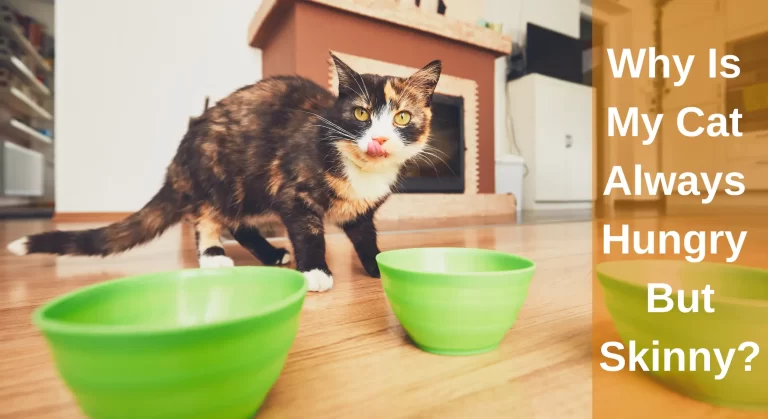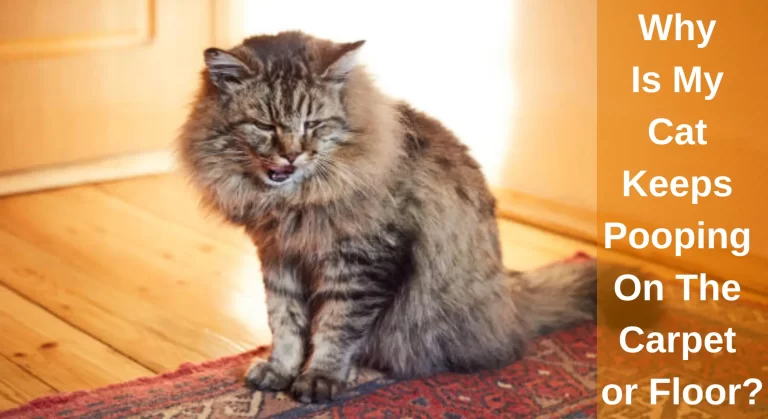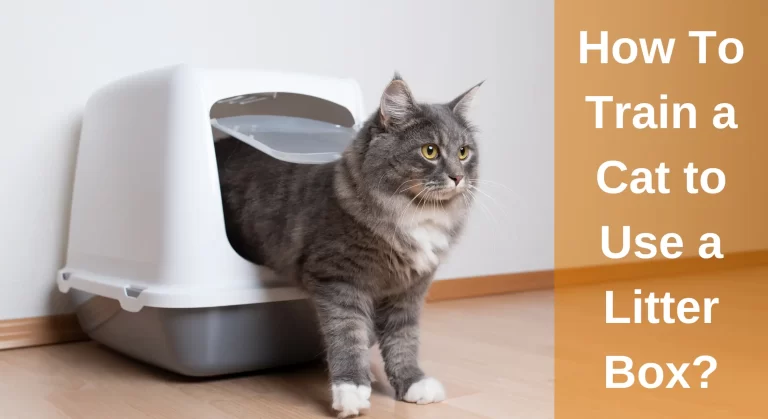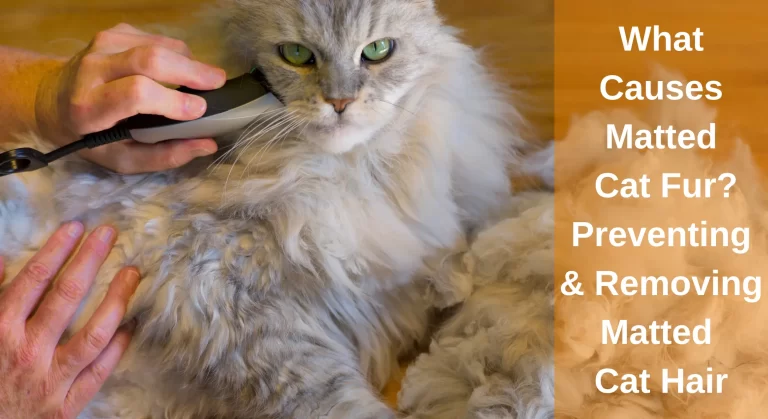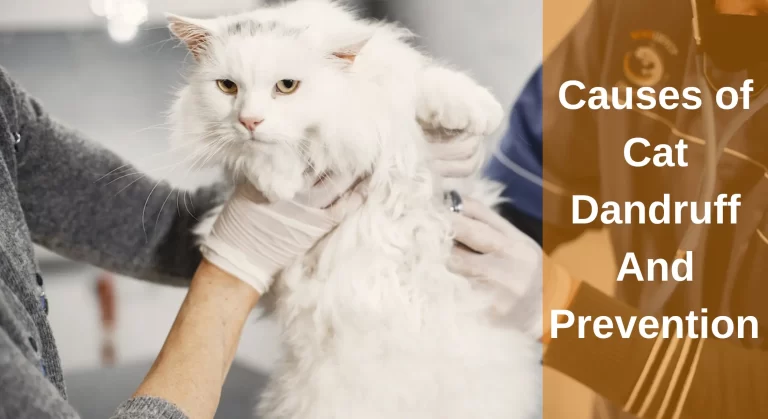My Cat Ate a Dryer Sheet: What to Do Now [Answered]
Most of you may have observed that your young cat companions enjoy playing with dryer sheets that are scattered in the house, laundry room, or a basket, or. Also, these dryer sheets are used to clean hair strands from cats’ bodies in low-humidity environments. But what if My “Cat Ate a Dryer Sheet” piece or a whole sheet?
When a cat eats a dryer sheet, it can pose risks to its health. The ingestion of toxic chemicals found in dryer sheets can cause abdominal discomfort, and bloating, and potentially lead to intestinal blockage. Additionally, the chemicals can irritate their respiratory system, resulting in difficulty breathing or coughing. It’s crucial to take immediate action and contact a veterinarian if your cat has consumed a dryer sheet.
Now you become confused and wonder how we can use a fabric softener safely around cats and how to protect them in a laundry room from these materials. Don’t worry, in this article, we will explore the dangers of dryer sheets for cats, signs that your cat has eaten a dryer sheet, steps to take if it happens, and alternatives to dryer sheets that are safe for your feline friend.

Are Dryer Sheets Poisonous to Cats?
Yes! A dryer sheet coats garments with agents that are heatedly released from the surface of the sheet to reduce static charge. If your cat ingests or chews on a dryer sheet, whether it’s a new one or old they could be harmed due to the identical elements that are present in high amounts in dryer sheets.
Some dryer sheets contain chemicals, such as fragrances, surfactants, and softening agents, that could be toxic to felines. Additionally, the fabric of the sheet itself can cause digestive issues or intestinal blockages if consumed in large quantities.
Moreover, most veterinarians say that the cationic surfactants, which are contained in dryer sheets, can harm cats in several ways, from slight skin rashes to extensive systemic discomfort and respiratory failure.
Check Out: My Cat Ate Plastic Wrapper: What Should I Do
What to Do if Your Cat Eats Fabric Softener? What to Do if My Cat Ate a Dryer Sheet?
If you suspect that your cat has consumed a dryer sheet, here are some steps to take:

1. Stay Calm and Assess the Situation
While it can be worrisome, maintaining a calm demeanor will help you make rational decisions. Try to determine if your cat has ingested the entire sheet or only a portion.
2. Call Your Vet Right Away
You must call your vet right away if you suspect that your cat consumed a dryer sheet or some liquid fabric softener. Do not induce vomiting unless specifically advised by a professional, avoid inducing vomiting at home, doing so could make your cat’s mouth and esophagus more irritated. Collect all the information you need to give the vet, including the product’s brand, when your cat consumed it and an estimate of its quantity.
Your veterinarian could advise you to take your cat to a veterinary clinic for medical care, based on the circumstances. It’s likely that your veterinarian will be able to suggest at-home care, yet it’s more certain that you’ll have to schedule an appointment.
3. Monitoring Your Cat’s Behavior
While waiting for veterinary guidance, closely monitor your cat’s behavior. Keep an eye out for any changes in appetite, energy levels, or signs of distress. If the situation worsens or your cat exhibits severe symptoms, it may be necessary to seek immediate medical attention.
Find Out: My Cat Ate a Feather: What Happens When a Cat Devours a Feather
What Happens if You Ingest Dryer Sheets? The Dangers of Dryer Sheets for Cats
Cationic substances like benzene acetate, benzaldehyde, and formaldehyde were added to dryer sheets to transfer smoothness and aroma onto dry garments. These cationic substances when ingested by your cats will cause toxic tissue damage.

1. Ingestion of Toxic Chemicals
Cats are frequently extremely sensitive to toxins, and fabric conditioner compounds are no different. Cationic substances like benzene acetate, benzaldehyde, and formaldehyde were added to dryer sheets to transfer smoothness and aroma onto dry garments. These cationic substances when ingested by your cats will cause toxic tissue damage.
The gastrointestinal tract and mouth may become inflamed and develop ulcers as a result of the toxic materials. These dryer sheets have the potential to clog the intestines if consumed, which might require surgery.
Among the health issues that can develop after ingesting the toxins in dryer sheets is renal failure. Furthermore, skin inflammation can happen. In extreme situations, ingesting these toxic substances might cause organ failure or the breakdown of the neurological system.
Call your veterinarian right away if you think your cat may have ingested the entire dryer sheet or inhaled its toxins.
Also, the majority of dryer sheets are constructed of synthetic substances that are hard for the digestive system to digest. These two characteristics make dryer sheets extremely hazardous for cats.
Also, Check Out: Cat Ate Oxygen Absorber: The Dangers of Iron Oxygen Absorbers for Cats
2. Intestinal Blockage
A cat who consumes a dryer sheet could get a gastric blockage. Serious disease and even fatality can result from an obstruction in the gastrointestinal tract. Gastrointestinal blockages frequently require surgical or endoscopic removal. The hazards to your cat’s condition could rise as a result of these treatments.
Not only this, but the thick fabric of this sheet won’t degrade in your cat’s digestive system and causes severe obstruction. Sometimes surgery is required to eliminate obstructions brought on by these kinds of substances.
Secondly, the epidermis, soft tissues, and mucosal lining may become irritated by the substances in dryer sheets or fabric softeners. The injury may be severe and manifest as blisters or sores if it is intense. Moreover, several of these compounds have been linked to severe kidney failure, lung injury, and impairment of the neurological system.
3. Respiratory Issues
Dryer sheets often emit strong fragrances, and these scents can be overwhelming for cats with their sensitive respiratory systems. The chemicals released from dryer sheets can irritate a cat’s airways, causing coughing, wheezing, difficulty breathing, and even nasal or ocular discharge.
These respiratory issues can range from mild irritation to more severe complications, depending on the individual cat’s sensitivity and the amount of exposure.
Signs and Symptoms of Dryer Sheet Ingestion
If your cat has managed to ingest a dryer sheet, there are certain signs to watch out for that may indicate a problem:
- Vomiting and diarrhea: These are common initial signs of gastrointestinal irritation.
- Loss of appetite: Cats may experience a decreased desire to eat after consuming a foreign object.
- Lethargy and weakness: Chemical compounds in dryer sheets can cause lethargy and weakness in cats.
- Coughing and difficulty breathing: Respiratory issues may occur if the inhaled fragrance or chemicals irritate the airways.
- Abdominal discomfort or bloating: Ingesting a dryer sheet can lead to abdominal discomfort or bloating in cats.
- Difficulty breathing or coughing: The chemicals present in dryer sheets can cause respiratory issues, resulting in difficulty breathing or coughing in cats.
Interesting Reading: My Cat Ate a Whole Bag of Treats: What Should I Do? [Answered]
How to Safely Use Fabric Softener Around Cats
Extra care is required while using fabric softeners near cats since certain cats may be hypersensitive to the compounds in fabric softeners, which could result in health issues. Below are a few guidelines for using fabric softener near cats in a safe manner:
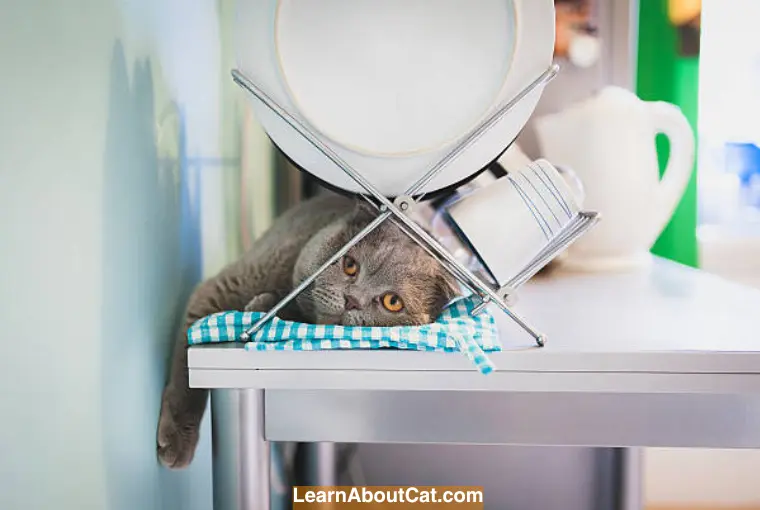
- Select a fabric softener that is safe for pets or hypoallergenic because these products don’t contain many toxic substances that might hurt your cat. Avoid using fabric softeners that include intense scents, colors, or other substances that could be dangerous.
- Before applying the fabric softener, you should dilute it. This will lessen the concentration of toxins that your cat might be exposed to.
- Use very little fabric softener as compared to the description suggests. Due to this, your cat will be exposed less to the chemicals.
- Put the fabric softener away from your cat’s range by hiding it in a cupboard or tall rack that is safe yet away from your cat’s access.
- Allow the fabric softener to fully dry without letting your cat touch any coated clothes. This will lessen the chance of your cat consuming any toxins that could be there.
- To reduce the chance of contact, don’t wash your clothes that are covered with fabric softener along with your cat’s bedsheets and other belongings.
- Examine your cat for any indications of hypersensitivity to the fabric softener, including persistent clawing, sniffing, or breathing issues. Avoid utilizing fabric softener and get in touch with your vet as soon as you observe any of the above signs.
You can easily use the fabric softener near your cat without endangering its health by sticking to these guidelines.
Also Read: My Cat Ate Rubber Band? What Should I Do
How to Keep Your Cats Safe in The Laundry Room
You may give your pets full freedom in the laundry room if you adore them. It could look like a huge play area to your cat because there are appliances that provide heat and lots of items to nibble. However, there are safety measures that need to be done inside the laundry room to protect your cats. These safety measures are as follows:
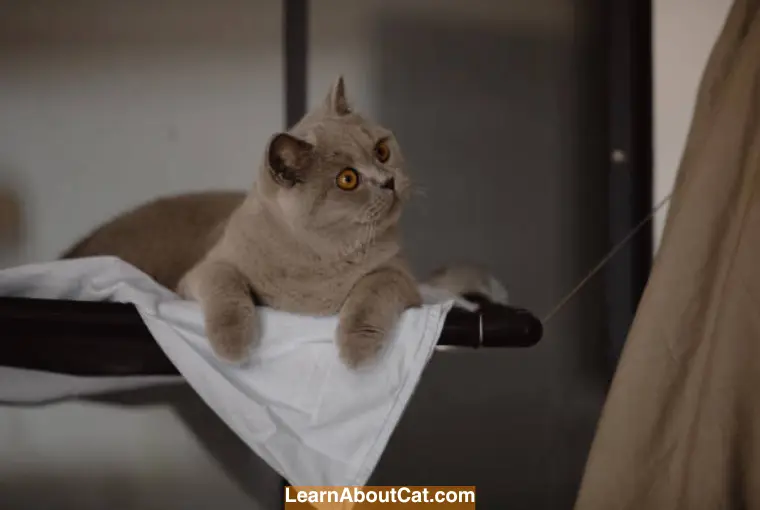
Make Your Washers and Dryers Safe
A washing machine or dryer may appear like the perfect spot for a cat to sleep, particularly if they are toasty. To avoid mishaps, please ensure that the doors and covers of the machines are closed. When you’re not using them, remove the plugs of washing machines and dryers for extra protection. Before adding the garments and turning the washers on, please stop by and make sure they are clear.
Hide Laundry Detergents in a Safe Place
A secure or pet-proof closet is ideal for storing all washing supplies. Even detergents, cleaning agents, and bleach can be harmful if consumed.
Any goods that drop on the machinery or the flooring should always be swept up or cleaned up. Due to the way they are packaged, liquid caps and soft laundry sachets can seem like toys or tasty treats. The substance frequently flushes into cats’ eyes when they are perforated and can result in retinal ulcers.
If any of the single-dose surfactants are ingested, please contact our staff right once. Even if a cat doesn’t swallow the substances, certain substances, such as ammonium and bleach, can mix to produce toxic vapors that are hazardous to it. So, always keep your cats away from it.
Keep Your Cats Away from the Iron Table
When a cat is nearby, pressing must not be done. A cat might be crushed by a hefty, hot iron if accidentally knocked to the pressing board. Never leave your cat alone to a heated iron on a pressing board. Even if the iron is not plugged in and is cold it can be hazardous for cats. A good option is a wireless iron with an automated cut-off.
An integrated mounted pressing board with a lockable drawer is the safest option. The laundry entrance or accessibility to the washers must constantly be locked, and all items must be kept secure inside locked doors, except when you’re able to keep an eye on your cat while they’re in the room.
Use Eco-Friendly Alternatives of a Dryer Sheet and Fabric Softener
Baking soda softens the liquid to act like a fabric conditioner.
- A really cool alternative is dryer balls that are made from organic fibers, usually woolen. These balls drain away water and make air spaces between when your clothing dries in a dryer. Moreover, it speeds up the drying process and lessens the electric charges that build up when materials brush against one another and cause static adhesion.
- Making your own inexpensive, environmentally friendly dryer sheets from used kitchen towels, linens, t-shirts, or other textile materials.
- Vinegar can also be used as a fabric softener, particularly if your water is “hard” since it contains many minerals.
Frequently Asked Questions
How long does it take for symptoms to appear after dryer sheet ingestion?
The onset of symptoms can vary depending on the amount ingested and the individual cat. Some cats may show signs of illness within a few hours, while others may take longer. It’s important to monitor your cat closely and seek veterinary care if any concerning symptoms arise.
Why do cats lick dryer sheets?
Cats lick dryer sheets because of the smell of the chemicals such as benzyl acetate which are present in them. This chemical is also present in certain perfumes and may attract cats. Another reason is that cats might be attracted to the material of dryer sheets which is soft and matte. Also, it resembles a cat’s tongue or hair.
Is licking a dyer sheet bad for cats?
Yes, cats should avoid licking dryer sheets since they include chemicals that are dangerous to consume. If consumed in excessive numbers, the chemicals present in dryer sheets have the potential to irritate the stomach and result in gastrointestinal symptoms. Moreover, if a cat interacts with the toxins in dryer sheets, it may damage its skin, eyesight, or cardiovascular system.
Is it Ok for cats to play with or chew wool dryer balls?
Although playing with or chewing on wool dry balls is normally harmless for cats, it’s still a good idea to keep an eye on them so they won’t eat any fibers. Wool dry balls are a safe alternative to conventional dryer sheets because they are composed of organic fibers and don’t include the same toxins. Still, if they’re ingested they’ll cause obstruction issues.
Should I use fabric softener when washing a cat bed?
No, while laundering cat bedding, fabric softener is usually not recommended. In fact, these solutions include toxins that can hurt a cat’s epidermis or breathing system, it is frequently recommended that you refrain from applying fabric softener or other fragrant cleansers while cleaning cat beddings.
Why would a cat eat liquid fabric softener?
Liquid fabric softener includes chemicals and smells that cats find pleasant, so they may be drawn to the scent or flavor of it.
What are some other household items that can be harmful to cats?
Common household items that can be harmful to cats include certain plants, cleaning products, medications, and certain human foods. It’s important to research and ensure a safe environment for your feline companion.
Conclusion
If your cat has eaten a dryer sheet, it is important to be proactive and take appropriate measures to ensure their well-being. The ingestion of toxic chemicals found in dryer sheets can lead to various health issues, including abdominal discomfort, intestinal blockage, and respiratory problems. Promptly contacting a veterinarian is crucial in such situations, as they can provide necessary guidance and medical assistance.
Tell your doctor about the situation and watch out for any symptoms of illness in your cat, like nausea, diarrhea, decreased appetite, or lethargic behavior. These signs could mean that your cat is reacting negatively to the dryer sheets or fabric softeners.
Moreover, follow the above guidelines to keep your cats safe in the laundry room, and try to avoid using fabric softeners or dryer sheets around your cats. Must try the above eco-friendly alternatives of dryer sheets and fabric softeners and let us know your experience.
Related Posts:
Who is Isabella?
My name is Isabella, and I am a dedicated and knowledgeable cat enthusiast. With years of experience caring for cats and a deep love for felines, I made a mission to help other cat lovers navigate the challenges of cat ownership.

